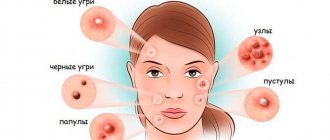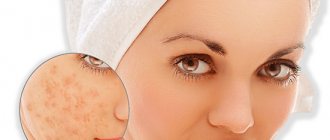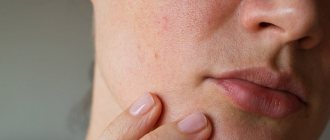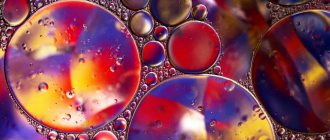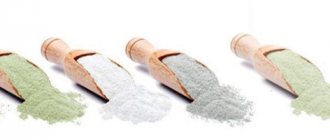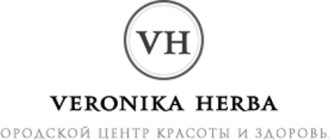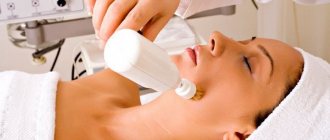When the skin peels and itches, this may be the result of bad habits (smoking, etc.) or adverse effects of environmental factors. But often the cause is a lack of vitamins and improper use of cosmetics. In women, hormonal changes also affect the condition of the skin. Various pharmaceutical preparations, cosmetic creams, and folk remedies are used for treatment.
In newborns, peeling usually spreads throughout the body. This occurs due to the skin adapting to the air space. It is necessary to moisturize and soften the baby's skin. In older children, peeling can be caused by the same reasons as in adults.
- Celery
Treatment depending on the causes
Problems with the epidermis are caused by various reasons. Most often, external factors influence: cold, direct sunlight, too dry air. In this case, you need to protect your skin from adverse climatic and weather conditions. It is recommended to humidify the air and use special skin creams. But irritation, redness and peeling on the face can also be caused by various pathologies.
Allergic reaction
The cause of peeling and irritation is sometimes an allergic reaction. In this case, an additional symptom occurs - itching. Irritation manifests itself in redness of the skin, the appearance of a rash and even blisters (with hives).
Treatment in this case should be comprehensive, i.e. you need to take antihistamines, for example, Claritin, Zyrtec.
Local therapy plays an important role. You can use Fenistil gel. For severe inflammation, peeling and the appearance of red spots, ointments from the glucocorticosteroid category - hydrocortisone - are recommended.
Contact dermatitis
Contact dermatitis manifests itself in a similar way. A pathological skin reaction is caused not by allergens (pollen, animal dander, house dust), but by various irritants - chemicals and even metals, including cleaning products based on ammonia and sodium orthophosphate, as well as agricultural chemicals.
Most often, contact dermatitis occurs on the hands. But if you are careless, chemicals can get on your facial skin. In this case, it is necessary to eliminate contact with irritants and use glucocorticosteroid ointments based on hydrocortisone and prednisolone as local therapy. For mild forms, zinc-based ointments are sufficient.
Infectious redness of the skin
Infectious causes of irritation include erysipelas, acne, microsporia, trichophytosis, etc. Demodicosis occupies a special place. It is caused by a microscopic mite.
Antibiotics and local bactericidal and antiseptic agents are used for treatment.
Inflammatory redness of the skin
Inflammatory processes can be caused by various factors: the use of cosmetics, photosensitivity (increased skin sensitivity to sunlight when taking certain medications or procedures), psoriasis, dermatitis. You will have to give up cosmetics. If photosensitivity occurs, you should stop taking the provoking drug. In other cases, appropriate drug treatment is required.
Eczema occupies a special place. With this disease, peeling, vesicles, redness, and crusts appear on the skin. Antihistamines, anti-inflammatory nonsteroidal and hormonal drugs, and antibiotics are used.
Diseases of internal organs
Redness and peeling of the facial skin can be caused by diseases of the internal organs, such as:
- diabetes;
- increased body temperature;
- atherosclerosis;
- heart and kidney failure;
- hypertension;
- decreased level of acidity in the stomach;
- pathology of the trigeminal nerve;
- cirrhosis of the liver;
- erythrocytosis.
Treatment is different in each case. The doctor selects the therapy.
Vascular diseases
Most often, facial redness is caused by rosacea and rosacea. The latter represents an increased reactivity of blood vessels to changes in temperature, weather conditions and other factors, as a result of which they expand. The appearance of such pathologies is associated with genetic predisposition.
Cuperosis is the dilation of blood vessels in the skin, but they never return to their original position, which is why the skin of the face takes on a reddish color. The condition is provoked by cirrhosis of the liver, gastritis, hypertension, etc. “Spider veins” are clearly visible on the face.
In the early stages of rosacea, it is enough to protect the skin from ultraviolet radiation and weather conditions and moisturize. In advanced cases, coagulation of destroyed capillaries and their sclerosis are required.
Hyperemia and erythema
Hyperemia is excessive filling of blood vessels with blood. Erythema is redness of the face due to severe dilatation of the capillaries. On the face, the cheeks turn red first. Blueness may appear.
If the condition is caused by vegetative-vascular dystonia, then sedatives are prescribed. For hypertension, beta blockers, Troxerutin, and heparin ointment are used.
Mental causes
The condition of the skin is affected by strong excitement, emotional tension, stress, depression, and fears. In this case, sedatives help. It is best to use herbal medicines - you can buy tinctures of motherwort, hawthorn, and valerian at the pharmacy.
A special place is occupied by blushing syndrome, in which redness of the face is caused by stress or excitement. In this case, spots of different diameters usually appear on the face. The mechanism of the syndrome is associated with increased work of the sympathetic nervous system, due to which the blood vessels sharply dilate. In this case, medications will not help. The only option is to cut or apply a clip to the nerve that runs from the vessels of the face to the brain.
Inappropriate cosmetics
In women, facial skin irritation is often the result of using inappropriate cosmetics. For example, this effect is achieved by products containing alpha acid hydroxides, which are used in peeling products. Sensitive skin responds to their action with irritation and peeling. Therefore, you need to abandon such products and use a soothing cream until the skin heals.
Even strips used to cleanse the nose of blackheads can affect the condition of the skin. When purchasing, you need to carefully study their composition to make sure that there are no allergens or irritants in it.
Skin irritation after shaving
To avoid irritation after shaving, hair removal or depilation, you must first take a warm shower or at least moisten your facial skin with warm water.
A man may experience acne on his face after shaving. In women, a rash occurs in all treated areas, as some hairs grow into the skin. Therefore, for preventive purposes, it is recommended to use any pharmaceutical cream, for example, Metrogyl. You can also find special shaving oil in stores that prevents ingrown hairs.
Shaving gel, foam or oil is chosen depending on your skin type; ignoring this requirement can lead to irritation. For dry and sensitive skin, choose alcohol-free balms, products containing chamomile and aloe vera extracts.
For normal and oily skin, products containing alcohol are used. There are also plants that have a drying effect - oak bark, nettle, St. John's wort. It is advisable to buy products containing silicone for shaving, as they improve the glide of the razor over the skin.
It is recommended to use any other medications containing triclosan and salicylic acid. Aftershave lotion is not for everyone. For those with sensitive skin, it will only increase irritation. It is better to use emollient balms; for severe inflammation, cortisone ointment.
Prickly heat
Miliaria is a specific form of dermatitis, which manifests itself as irritation of the skin due to excessive sweating. In this case, it is necessary to use drying agent.
For example, wiping the face with decoctions of string, oak bark, chamomile, and a weak solution of manganese is suitable. Affected areas should be treated with antiseptics. For example, an alcohol tincture of salicylic acid is suitable.
Internal causes of skin peeling:
- One of the most common “internal” causes of flaky skin is allergies. As a rule, it manifests itself in the form of redness, itching and peeling. Allergens can enter the body or act through direct contact. If you suddenly experience severe irritation, remember what unusual products or materials you have encountered recently.
- Also, peeling of the skin on the face can be caused by chronic skin diseases: dermatitis, ichthyosis, eczema, lichen. To diagnose and select treatment, you must consult a doctor.
- But often peeling is caused by a general weakening of the body. To improve the condition of the skin, it is necessary to compensate for the lack of vitamins A, B, E and F.
How to choose soothing creams
To eliminate dryness and irritation of the skin, products with a minimum content of preservatives and a maximum of beneficial herbal ingredients are used.
You should pay attention to the smell. Studies have shown that in 50% of cases, skin irritation is caused by fragrances of various products. It is more pleasant to use a scented cream, but if you have skin problems, it is better to give preference to an unscented product.
The following products can be purchased in pharmacies:
- Panthenol . Removes frostbite and burns, restores damaged skin, accelerates its regeneration.
- Bepanten . Removes peeling, irritation and inflammation.
- Rescuer . Accelerates skin regeneration, helps with insect bites, burns, frostbite.
- We see . Accelerates the process of tissue regeneration, fights eczema and dermatitis, and slows down skin aging.
- Pantoderm. Helps with severe peeling. Removes irritation, dryness, itching.
Helps relieve irritation with the “Protection and Moisturizing” day cream from the Natura Siberica brand, which is intended directly for sensitive skin. It contains extracts of Rhodiola rosea, Siberian rowan, chamomile, lemon balm, as well as components such as vitamin P and hyaluronic acid. The cream prevents allergic reactions and improves the skin's natural defenses against aggressive external factors.
Uriage “Roseliane” cream is recommended. for sensitive skin. Contains rose flower wax, glycerin, ginseng extract. The product moisturizes and soothes the skin.
The day cream “Day with buttercup extract” from Yves Rocher has proven itself well. It fights irritation and redness, improves blood microcirculation, and also increases skin protection from external influences.
Pharmacy ointments
Pharmacy ointments help remove irritation and flaking on the facial skin. The most popular means:
- Radevit. Restores skin, removes inflammation.
- Akriderm. Removes allergies, inflammation, redness, itching, and fights bacterial infections. Accelerates tissue regeneration.
- Triderm. It is a hormonal remedy that removes inflammation and allergies. Has bactericidal and antifungal effects.
- Sinaflan. An inexpensive drug for sunburn, allergies, dermatitis, eczema, psoriasis.
- Psilo-balm. Has a cooling effect. Helps with allergies, burns, insect bites.
- Gistan. Removes inflammation and itching, slows down the allergic reaction, accelerates skin restoration.
- Elidel. Most often, the product is used for atopic dermatitis. The drug eliminates inflammation and accelerates the recovery of affected areas of the skin.
- Elokom. The medicine eliminates inflammation and allergy symptoms.
- Fenistil. Removes itching (including from insect bites), relieves inflammation.
- Zinc ointment. Eliminates irritation, helps with acne, dermatitis, diaper rash and other skin defects.
In pharmacies you can buy vitamin complexes: Imedin, Supradin, Complivit, Revidox. They should be taken in courses. These products compensate for the lack of vitamins and other useful substances in the human body.
Diagnostics
Diagnostic measures to identify the cause of a dermatological disease:
- Visual inspection. Based on the location and appearance of the inflammation, the doctor can make a preliminary diagnosis.
- Clinical blood test. The result of the analysis will show the presence or absence of an inflammatory process in the body, which can cause rashes.
- Allergological research. To diagnose allergies, the blood is examined for the presence of antibodies to allergens and the skin for reaction to irritants.
- Hormonal study. The content of thyroid and adrenal hormones, as well as sex hormones, is determined.
- Blood test for syphilis , AIDS, Hepatitis B and C.
- Examination of skin scrapings for fungus and mites.
- Blood and stool test for parasites.
A blood test is performed to check for the presence of parasites.
In case of immunodeficiency and HIV detection, an immunogram is performed - a comprehensive study of the human body’s immune system. For analysis, blood is taken from a vein.
If lupus is suspected, a blood and urine test, an X-ray of the joints and chest, an electrocardiogram, and an ultrasound of the digestive and excretory system are performed.
Folk remedies
In addition to creams, ointments and vitamins, various folk remedies are used at home in the form of masks, compresses, lotions, and applications.
Celery
Celery is used to make effective remedies for irritated skin:
| Means | Application |
| Petiole celery mask |
|
| Lotions from a decoction of celery leaves |
|
Herbal infusions
Effective herbal decoctions for different skin types and conditions:
| Skin type | Means |
| Irritated and inflamed | Use a decoction of calendula or string (1 tbsp of dried inflorescences per glass of boiling water). Use the product daily |
| Sensitive | Decoctions of rose, aloe, parsley, jasmine and cornflower are used. They are prepared in the same way: 1 tbsp. l. per glass of boiling water |
| Combined | Chamomile and nettle, linden and plantain are suitable. Herbs are brewed individually or in combination with each other, mixed in equal proportions. Recipe:
|
Compresses are made from herbal decoctions and infusions - they soak gauze with them and place them on the face. Hot compresses are recommended for dry and normal skin. To eliminate irritation on oily skin - cold.
Facial steam baths will be beneficial:
- Prepare 2 liters of any herbal decoction.
- They pour it into a basin and lean over it, closing their eyes.
- Cover with a thick towel.
- They wait 20 minutes.
Parsley
Parsley contains many vitamins, but the main ones are antioxidants - ascorbic acid and vitamin A, which relieve swelling and inflammation. The substances included in its composition soothe irritation, help get rid of acne and whiten the skin.
There are several types of parsley masks, they are chosen depending on skin type:
| Means | Recipe and application |
| Parsley mask for oily skin |
|
| Parsley and yoghurt for normal to oily skin |
|
| Parsley and ground oatmeal for oily skin |
|
| Acne mask |
|
Cosmetologists recommend wiping irritated or flaky skin with parsley juice or its decoction (2 tablespoons of the raw material is poured with a glass of boiling water, brought to a boil again, and then infused for 30-45 minutes).
If your face is very flaky, you can make a mask of parsley and fatty cottage cheese:
- The components are mixed in equal proportions.
- Apply to the skin in an even layer.
- They wait 20 minutes.
- Wash off with water.
A popular mask based on parsley and sour cream for any skin type:
- Chop greens.
- A couple of pinches are mixed with 2 tbsp. l. sour cream.
- Apply for 15 minutes.
- Wash off with water.
Peppermint based products
Mint contains not only essential oil and menthol, but also ascorbic acid, flavonoids, tannins, and other components. Thanks to this, it is a universal product that can be used for young and mature skin. Moisturizes, stimulates regeneration processes, eliminates irritation and redness, accelerates healing.
Effective peppermint-based products:
| Means | Recipe, application |
| Lotion |
The product helps relieve redness and inflammation after shaving, and also eliminates irritation caused by sun rays. |
| Tonic |
The tonic cleanses the skin well, helps relieve inflammation and redness, including after excessive tanning. |
Cosmetic ice cubes:
- Take a bunch of fresh mint leaves, one lemon, a glass of mineral water without gas.
- The leaves are thoroughly washed, crushed in a blender, mixed with lemon juice and added to a glass of mineral water.
- Stir.
- Pour into ice trays.
By rubbing the skin with such cubes, you can remove irritation and redness caused by any factors.
Masks
To quickly relieve redness and skin irritation, you can use homemade masks.
Cucumber
Cucumber mask is a classic of home cosmetology. It exists in several versions:
- For oily skin with irritation. Half a grated cucumber is mixed with egg white and applied to the face for 15 minutes and then washed off with cool water.
- For dry skin. The cucumber is peeled, chopped, mixed with 1 tbsp. l. sour cream and keep on the face for 15 minutes, then rinse with cool water.
Herbal
Preparation:
- Take 2 teaspoons of sage, the same amount of linden blossom.
- Brew in a glass of boiling water.
- Cover the container with them with a lid.
- After 10-15 minutes, filter the infusion through double-folded gauze.
- The resulting decoction is wiped over the face.
- A thin layer of herbal raw materials is applied to it.
- Cover the face with a terry towel.
- The wait time is 5-7 minutes.
Remove the remnants of the mask using a cotton pad and lubricate with regular nourishing cream.
Yeast based
For preparation:
- Take 10 g of dry yeast and mix with 1 tbsp. l. sour cream or kefir.
- Add the same amount of juice from any fruit.
The mask is applied to the face and washed off only after the composition has dried.
Oatmeal
Recipe:
- Mix equal amounts of oatmeal and hot milk.
- Add 1 chicken yolk, 1 tsp cottage cheese, 1 tsp. olive oil.
- The composition is cooled and kept on the face for 20 minutes.
With milk and olive oil
For preparation:
- Oatmeal is cooked in milk.
- 1 tbsp. l. the resulting product is mixed with 1 tsp. olive oil and honey.
The composition is kept on the face for 15 minutes.
Milk-vegetable
Cooking method:
- Grind the carrots on a grater.
- Mix 1 tbsp. l. product with the same amount of warm milk and oatmeal.
Keep the paste on your face for 15 minutes.
From egg yolk and honey
To prepare the mask:
- The beekeeping product is heated in a steam bath.
- Take 2 tsp. for 1 chicken yolk.
Apply the composition to the skin for 20 minutes.
From sea buckthorn
Take 1 tsp. sea buckthorn oil and 2 drops of lemon essential oil. Apply to skin for 20 minutes.
You can add mashed boiled potatoes.
From potatoes
For preparation:
- The root crop is washed, cooled and grated.
- Squeeze out the juice.
- A gauze pad is soaked in it and applied to the face.
Keep the mask on for 15 minutes.
From cottage cheese and fruits
Recipe and application:
- The fruits are crushed into puree and mixed with cottage cheese. Both components are taken in equal parts (any fruit is allowed).
- The composition is applied to the skin for 20 minutes.
With aloe juice
The pulp of the plant is crushed and mixed in equal quantities with honey. Keep the composition on the skin for 15 minutes.



